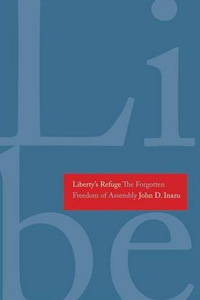Freedom of assembly has become the forgotten constitutional right, with courts’ attention focused more on freedoms of association and speech.
Both the Occupy and Tea Party movements, however, are reminders of how the right to assemble has been “at the heart of some of the most important social movements in American history: antebellum abolitionism, women’s suffrage and the Civil Rights Movement,” says John Inazu, JD, PhD, associate professor of law at Washington University in St. Louis. 
“The right of assembly protects the members of a group based not upon their principles or politics but by virtue of their coming together in a way of life.”
In his new book, Liberty’s Refuge: The Forgotten Freedom of Assembly, recently published by Yale University Press, Inazu examines why freedom of assembly has become “a historical footnote in American law and political theory,” and what has been lost with the weakening of protections for private groups.
“Claims of assembly stood against the ideological tyranny that exploded during the first Red Scare in the years surrounding the First World War and the Second Red Scare of 1950s’ McCarthyism,” he says.
http://youtu.be/SvNQSuLTzv4John Inazu, professor of law at Washington University in St. Louis, discusses the forgotten right of assembly — a right that has been “at the heart of some of the most important social movements in American history.”
“By losing touch with our past recognition of the freedom of assembly and the groups that have been embodied it,” Inazu argues, “we cede to the state the authority over what kinds of groups are acceptable in the democratic experiment.”
Inazu says that the right to assemble could begin to return to its earlier prominence through constitutional litigation.
His current research looks at freedom of assembly in the digital space.
For more information and to read the book visit: http://law.wustl.edu/faculty_profiles/inazu/?page_id=36